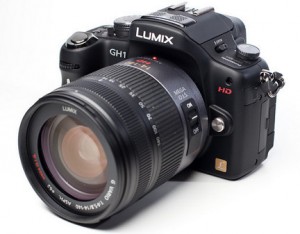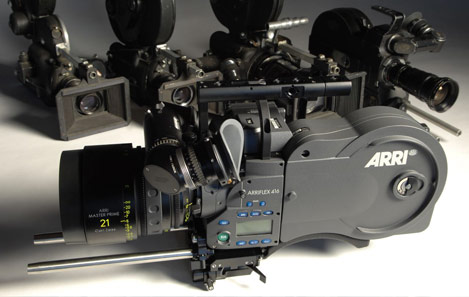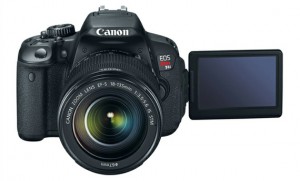This is the number one question I get asked by music video directors in Toronto who are starting out.
And rightfully so.
Purchasing a camera is a big investment. Cameras that produce cinematic images of high quality can cost any where from a few thousand dollars to tens thousand of dollars.
So that’s why, before pulling the trigger and making a purchase, you need to ask your self a few questions.
What is your budget? Are you just starting out and you’re not gonna be making money, or are you an established production and service business and you’re looking to step up your production?
What kind of music video you are looking to shoot? Is your music video for YouTube, Broadcast or are you gonna use it to learn the craft?
What is the workflow involved?
It’s important to know the answers to these questions, that way you’re not gonna end up with a $5000 camera, when all you needed was a $1200 camera that could have easily done the same job.
Let’s take a look at each question.
What’s your Budget?
There’s a three tier price spectrum when it comes to cameras. There’s the inexpensive cameras in the lower end, like the Canon and Panasonic DSLRS. The mid range cameras like the Canon C300 and Scarlet, and then there is the cameras in the high end spectrum like the Epic and Arri Alexa.
Most folks who can afford the high-end cameras don’t actually buy them, they rent them. Or I should say, the production company or label that the artist is signed to pays for the rental of the camera. So we’re not going to be looking at the high-end cameras. Cause again, those camera’s aren’t the kind that you buy.
You’re going to notice that your budget and experience has a lot to do with each other. In fact, they go hand in hand.
If you’re starting out. Then that most likely means you’re not getting paid. Either your skill set is not good enough, or you’re still trying to learn your craft. Either way, no revenue is coming in off the music videos you’re shooting.
If that’s the case, then you’re going to have to a) use what ever camera is at your disposal, or b) purchase the least expensive camera that produces the highest level of imagery (more on this later on)
If you are a music video director that has already learned his or her craft and and are loosing clients because of your gear, then it might be time to upgrade your camera.
But always remember that you need to recouperate your costs. You need to sit down and calculate that if you buy a camera for $15,000 how long will it take before you see a return on your investment?
If you can’t answer that question, then you need to reevaluate your budget.
So, here’s the catch. If you can’t buy because you don’t have the financial means just yet, but you need the camera to get gigs, then what do you do?
Simple. Rent.
Most music videos are a 1 to 2 day shoot. In most cases, you can just rent the camera for a few days – most rental houses give a discount the longer you rent.
Buy going the rental route, you can save, learn, and experiment with different cameras with out breaking the bank.
Is Your Music Videos For YouTube?
If your looking to make music videos soley for YouTube, then you don’t need the most expensive camera out there. As of now, camera’s like the Red Epic and Arri’s Alexa are overkill, in my opinion, for YouTube music videos. Maybe down the road when the telecom industry is ready to support 4k and we all have fiber optics, the high end cameras will be an option, but as of now, your gonna need something decent.
And what’s decent?
If you are doing music videos for friends or trying to learn the art, then decent is pretty much anything you have at your disposale.
I can hear people say, “I only have a phone camera”.
That will do.
Seriously.
An iPhone will work.
Almost all cameras out in the market today have enough imaging power to produce a decent image for the computer screen.
Take for example the iPhone. It does HD, provides a decent codec, and has enough resolution and color rendition to look impressive on a computer screen. Still not convinced, check out this music video done on an iPhone 4S.
[video_embed id=”HymoNGR3G5w” site=”youtube”]
However, if the music video is not for your friends, and your proficient in your craft, then you’re gonna need something that’s a little more powerful.
Because truth be told, on a real set, you’re going to want to be able to control the exposure, shutter speed, and depth of field…and that’s where DSLR’s come in.
The benefits of DSRL’s, for a music video is that they are inexpensive, produce an excellent image, and more importantly, gives you full manual control over the image.
So if your just staring out your “professional” career – and by professional I mean anyone who is getting paid for their services – then I would recommend two DSLR’s; the Panasonic GH2 or the Canon T4i.
Let’s look at the Canon T4i (also known as the Canon 650D).
Canon T4i (650D)
The Canon line of DSLR’s are a versatile group of video cameras. Although the entry level T4i is originally meant for photography, it also produces an excellent image for music video directors.
The huge advantage, of Canon’s DSLR, for me anyways, is that they are very inexpensive and easy to use.
Being inexpensive, the T4i allows you to buy a few of them to do mulit-camera shoots. Which saves you a tremendous amount of time on set.
But more importantly, it means that you you’ll have money left over to invest in a good set of lights, tripods, dollies, and other crucial film gear.
Below are the specs for the Canon T4i.
COST:
$750.00 (Body Only) at B&H and Amazon.
SIZE:
1920x1080p: 30/24 fps (NTSC), 25/24 fps (PAL)
1280x720p (HD): 60 fps (NTSC), 50 fps (PAL)
640×480 (SD): 30 fps (NTSC), 25 fps (PAL)
AUDIO:
44.1kHz Mono (Internal Mic), Linear PCM
RECORDING FORMAT:
MOV, MPEG-4 AVC, H.264
FILE SIZE
330 MB/min (1080P), 330 MB/min (720P), 82.5 MB/min (VGA)
RECORDING TIME
22 min for 1080P, 22 min for 720p, 1h, 32min for VGA
Here is a music video that I shot on the Canon T Series:
[video_embed id=”46920367″ site=”vimeo”]
PANASONIC GH2 (or the newer GH3)
 The Panasonic GH2 produces some of the most crisp and high resolution video footage that I have seen.
The Panasonic GH2 produces some of the most crisp and high resolution video footage that I have seen.
But what makes it really stand out from the crowd, is that it’s hackable. Unlike Canon’s DSLR, which are crippled by low bitrates and codecs, with the GH2 (hacked) you can get a high quality codec.
So what does that mean for you as a music video director? Well, for starters, it means that you will have much less macro blocking and more room for colour grading in post.
It also means that as the hacking scene improves the hack, so will your camera.
Here are the specs for the Panasonic GH2:
COST
$785 (www.amazon.com)
SIZE
• AVCHD :
![]() 24H: 1920 x 1080, (24p (23.976fps), 23 Mbps)
24H: 1920 x 1080, (24p (23.976fps), 23 Mbps)
![]() 24L: 1920 x 1080, (24p, 17 Mbps)
24L: 1920 x 1080, (24p, 17 Mbps)
![]() FSH: 1920 x 1080, (60i*, 17 Mbps)
FSH: 1920 x 1080, (60i*, 17 Mbps)
![]() FH: 1920 x 1080, (60i*, 13 Mbps)
FH: 1920 x 1080, (60i*, 13 Mbps)
![]() SH: 1280 x 720, (60p*, 17 Mbps)
SH: 1280 x 720, (60p*, 17 Mbps)
![]() H: 1280 x 720, (60p*, 13 Mbps)
H: 1280 x 720, (60p*, 13 Mbps)
• Motion JPEG:
![]() 1280 x 720, 30fps
1280 x 720, 30fps
![]() 848 x 480, 30fps
848 x 480, 30fps
![]() 640 x 480, 30fps
640 x 480, 30fps
![]() 320 x 240, 30fps
320 x 240, 30fps
AUDIO:
Dolby Digital Stereo Creator format, wind-cut feature
RECORDING FORMAT:
AVCHD / QuickTime Motion JPEG
FILE SIZE:
Max 23 MB/sec (1080p AVCHD)
FILZE SIZE PER CLIP AND RECORDING TIME:
2.0 GB for Motion JPEG, card capacity for AVCHD. Up to 2GB for Motion JPEG, up to capacity of card for AVCHD (Limited to 29 minutes on examples sold in Europe).
Here is a video shot with the hacked GH2:
[video_embed id=”33025136″ site=”vimeo”]
Just a reminder: The hacked GH2 does produce a beautiful clean picture, but it comes at a price.
1) It’s not always going to be stable, so you might want to think twice before using it on a paid job.
2) It can brick your camera, essentially turning it into a paper weight.
3) There is no offical support for it from either the manufacture or retailer.
4) And lastly, it can void your warranty.
So, if you’re not the adventurous or techincal type, then there is another option – the GH3.
The new GH3 will be coming out in late November 2012. The GH3 will have a much more robust body as well as more pro features, like headphone jacks and a better codec, so you might just want to wait out for that.
Here is a video recently done with the GH3 ($1200) :
[spacer]
[video_embed id=”49420579″ site=”vimeo”]
Music Video For Broadcast
If your music video is for broadcast – MTV, MuchMusic – then you’re going to need a little more robust camera.
Don’t get me wrong, a lot of broadcast shows, like House has been shot on a DSLR, but those where productions with over a hundred thousand dollar budget for post production.
If you’re doing the post production work as well, as most starting out directors do, then you’re going to want to use a camera and codec, that will give you the most leg room in post.
In my opionion, two cameras that stand out are the Red Scarlet and the Canon C300.
Now between these two camera the easy choice is the Red Scarlet, it does 4k, shoots RAW and has high frame rates (great for slow motion work). But you also have to take into consideration the workflow and the learning curve that is involded.
If you’ve started with an entry level camera like the Canon DSLR T series, then it’s relativily easy to pick up a Canon C300, turn it on and start shooting. With the Canon line, you know where all the buttons are and the workflow involved.
In contrast, the Red Scarlet has a bigger learning curve and a more complicated workflow, but it provides you with the most resolution and options in post production.
So. w
hich camera should you choose if your looking to shoot a music video that will be for broadcast?
Let’s look at each of the cameras in detail so you can see what’s involved.
RED SCARLET
The Red Scarlet is a powerful camera. It shoots at a high resoultion, 4k. That’s more then four times the resolution of any DSLR camera out there.
4K is benificiental even if your final delivery is for HD or SD, because it will give you room to zoom in and pan the image in post.
Additionally, 4K when down rezzed to HD or SD will give you a much more sharper image.
The Scarlet also shoots RAW, which means that there is no processing done to the image as it’s being recorded.
The positive side of RAW is that it gives you the flexibility to change the exposure, correct for colour temperature, and do heavy special effects work in post.
The negative side of shooting in RAW is that it takes a lot of hard drive space and also a lot of CPU and GPU processing power to debayer.
For consumer cameras debayering is done in camera. Consumer cameras are mono cameras that have a matrix of red, blue and green filters in front of the sensor, a bayer matrix. The camera records the levels of red, blue and green light falling onto the pixels. This data is then converted into colour values by debayering. Again, for consumer cameras, this is done in camera, and on the fly.
However, for cameras such as the Red Scarlet, debayering is done after you finished shooting.
Once finished, you take your footage into your NLE system and do the debayering through a software such as Redcine, which requires expensive equipment.
Here are the specs for the Red Scarlet:
COST:
- From $9700 (Body only). A”working” package will cost you $15, 940.
FORMAT
- The Scarlet X records in REDCODE RAW at 50MB/sec (440 megabits/sec).
SIZE:
- 5K (5120 x 2700): 1-12fps (HDRx 6fps)
- 4K (4096 x 2160): 1-30fps (HDRx 12fps)
- 4K QHD (3840 x 2160): 1-30fps (HDRx 15fps)
- 3K (3072 x 1620): 1-48 fps (HDRx 25fps)
- 1080p HD (1920x 1080): 1-60fps (HDRx 30fps)
- 1K (1024 x 540): 1-120 fps (HDRx 60 fps)
8.3MP Super 35mm CMOS sensor; Full HD 1920×1080
1920 x 1080: 59.94i/29.97p/23.98p; 50i/25p; true 24p (24.00)
1280 x 720: 59.94p/29.97p/23.98p; 50p/25p; true 24p (24.00)35 Mb/s (VBR) 4:2:0 MP@HL
1920 x 1080: 59.94i/29.97p/23.98p; 50i/25p
1280 x 720: 59.94p/29.97p/23.98p; 50p/25p25 Mb/s (CBR) 4:2:0 MP@H14
1440 x 1080: 59.94i/29.97p/23.98p; 50i/25pAUDIOLinear PCM; 2-channel; 16-bit; 48 kHz
CONCLUSION
Most music video directors that I know in the Tororonto and New York area, even after they do their home work and research, still don’t go out and make the purchase. They first rent the camera.
Reading about specs and watching videos is one thing. But it’s another thing once you get the camera in your hand and start playing with it.
It’s only then when you know if you made the right purchase.
Now, for the entry level cameras, I wouldn’t suggest for you to go and rent it, because most retail camera stores have a decent return policy.
But, if your interested in buying the Scarlet or C300, then before putting down a few thousand dollars, I would suggest for you to go to your local pro video rental shop and rent one for the weekend.
And even if you don’t purchase the camera, the rental won’t be a waste, what would be a waste, is if you paid $15,000 and after a few days regretted your purchase.
Hope the article has been helpful.
Manee Osman, Music VIdeo Director Production and Services (Toronto & New York)




